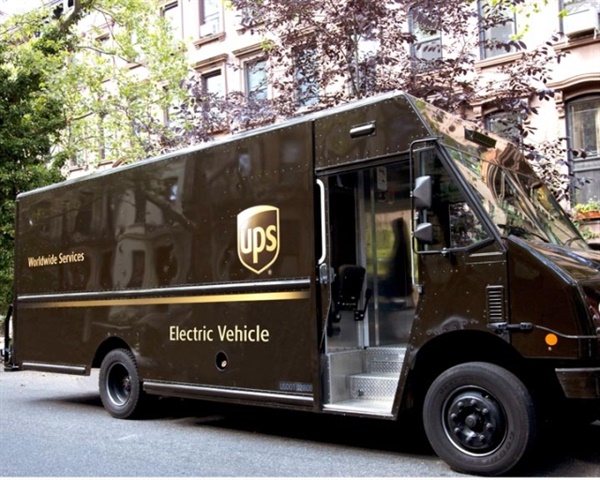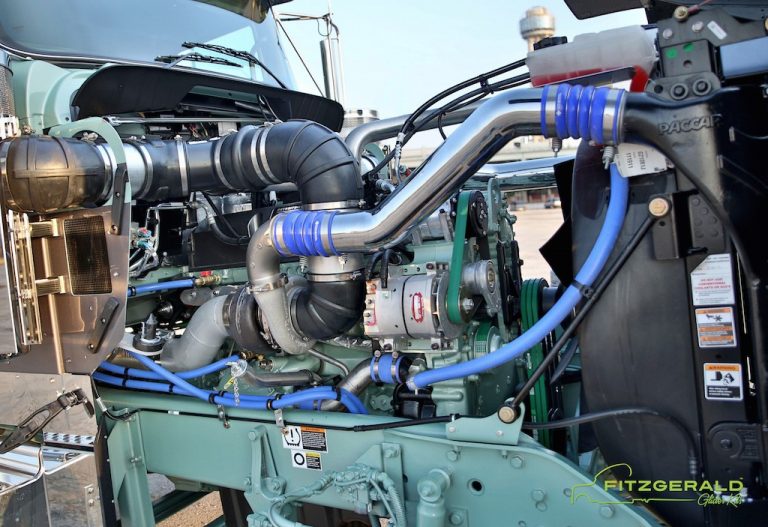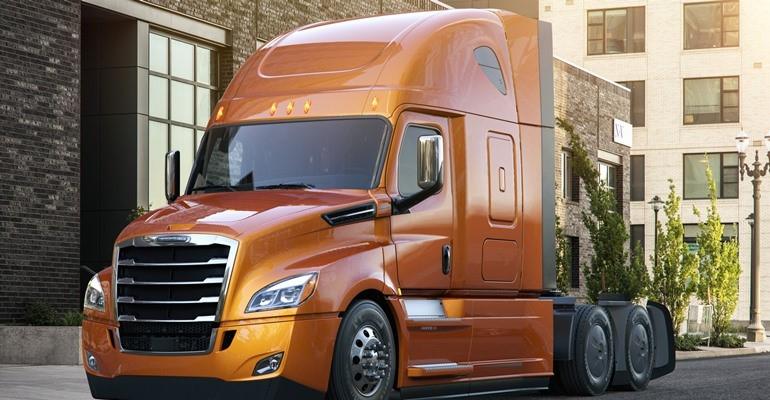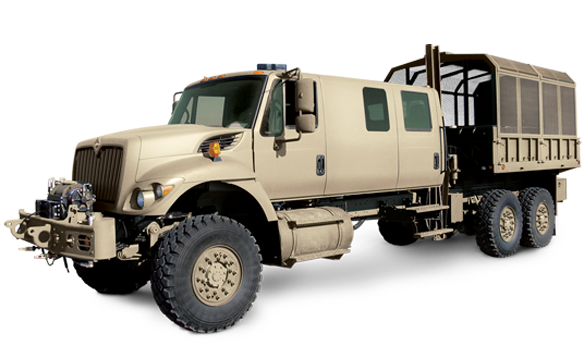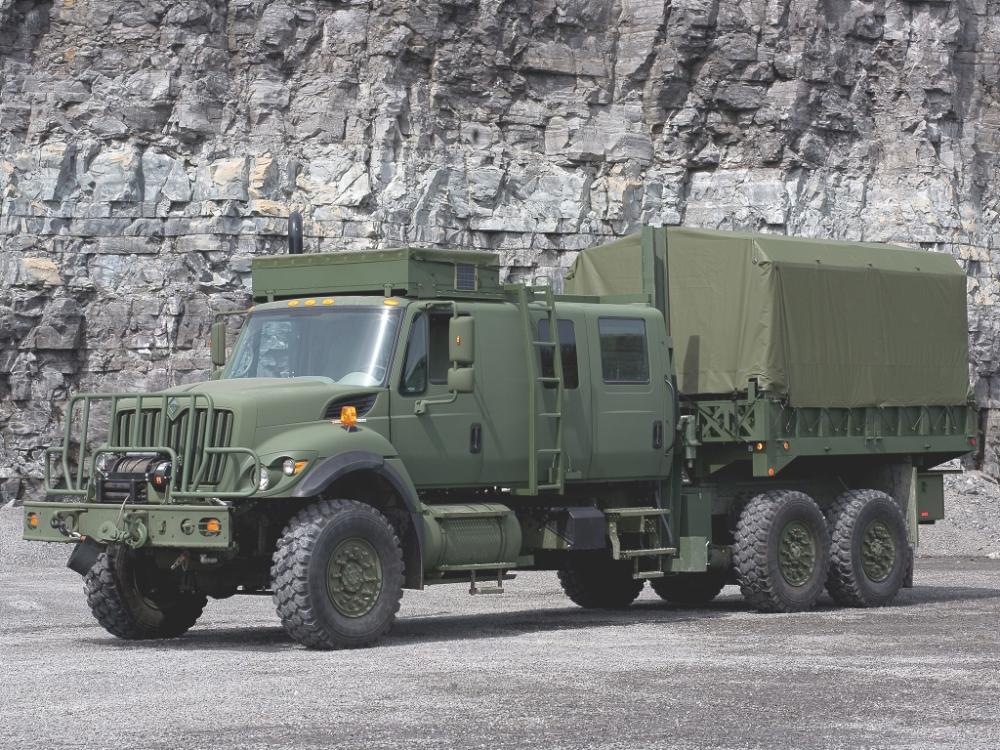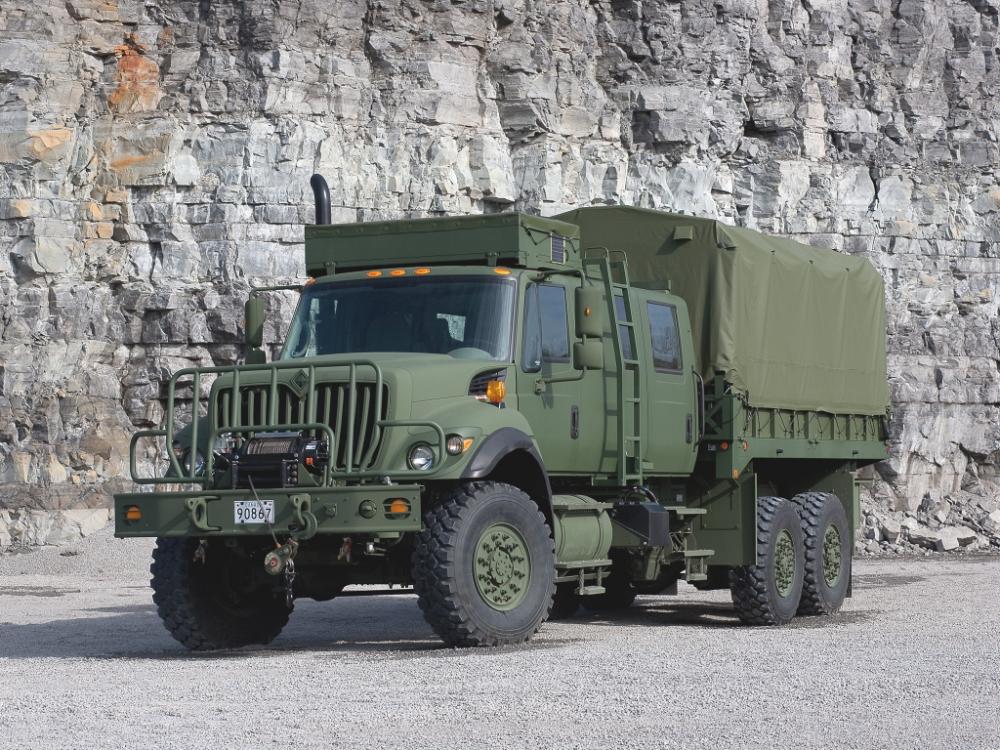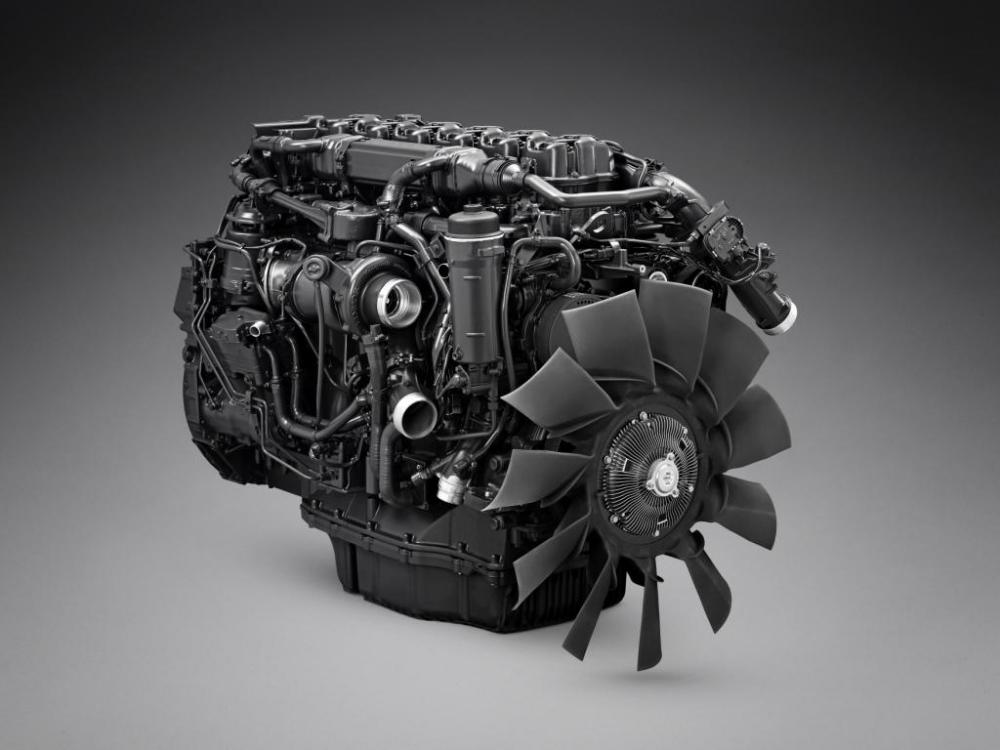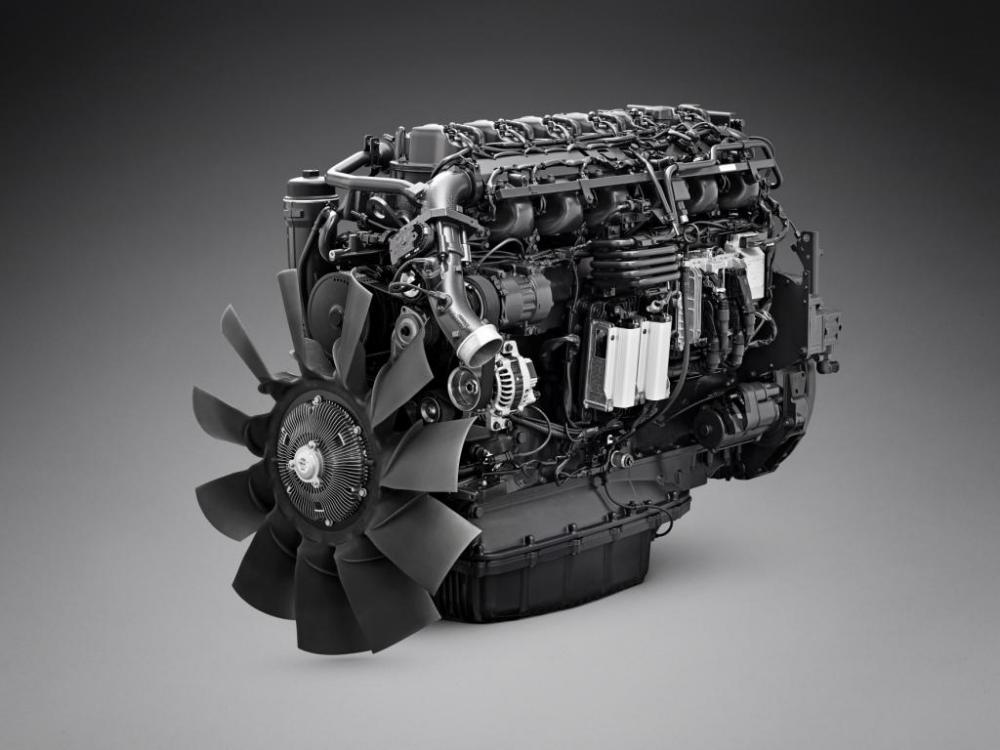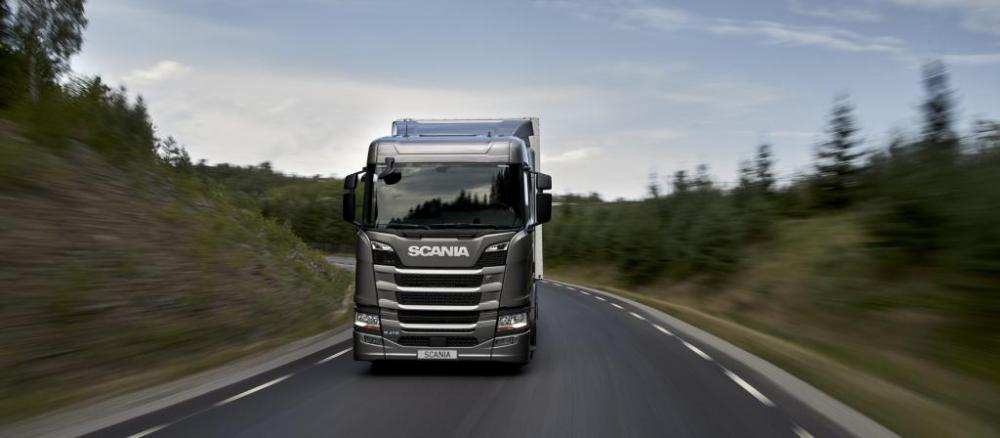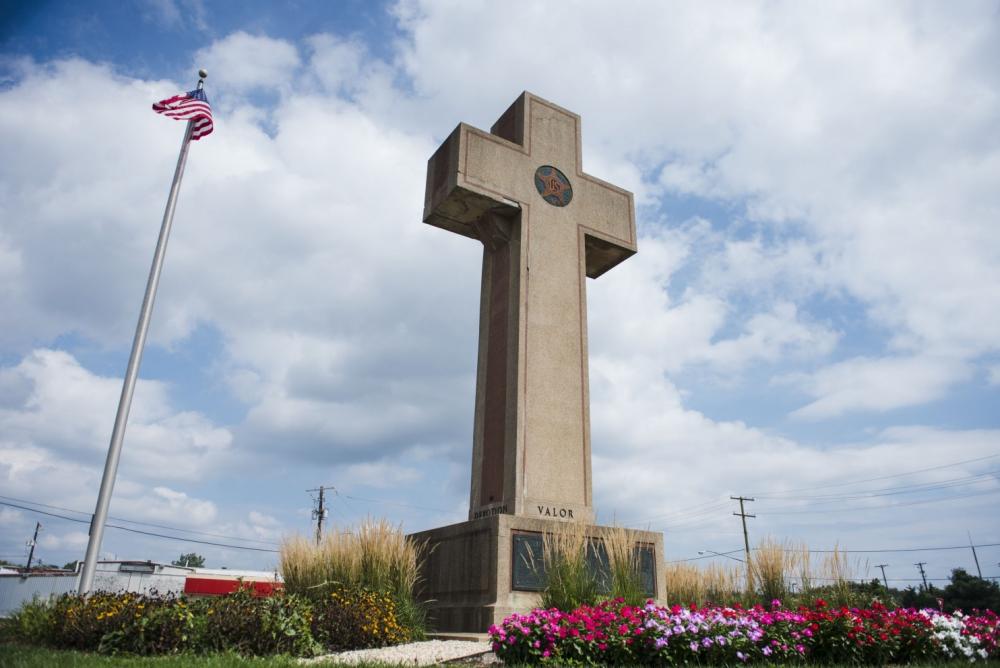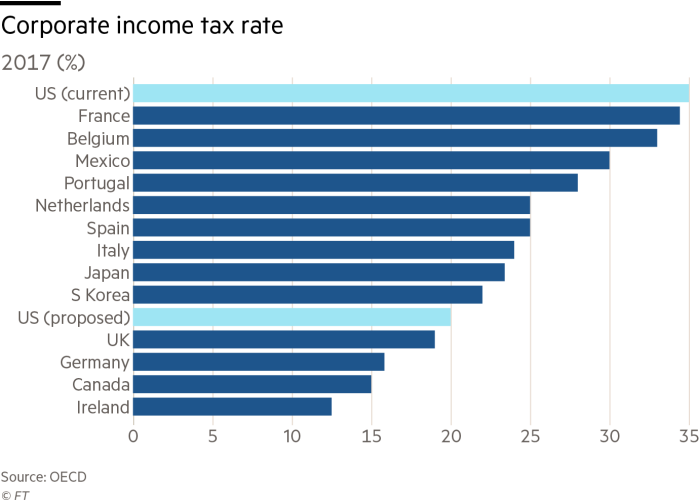
kscarbel2
Moderator-
Posts
18,885 -
Joined
-
Days Won
114
Content Type
Profiles
Forums
Gallery
Events
Blogs
BMT Wiki
Collections
Store
Everything posted by kscarbel2
-
Heavy Duty Trucking (HDT) / November 9, 2017 UPS and the New York State Energy Research and Development Authority (NYSERDA) plan to use new technology to convert UPS package delivery vehicles from diesel to electric, UPS has announced. UPS and Unique Electric Solutions LLC (UES) will design, build, test, and make the conversions. The project supports Gov. Andrew Cuomo’s goal to reduce greenhouse gas emissions 40% by 2030 by replacing diesel vehicles with clean technology. “Public-private partnerships help push innovation forward and transform industries,” said Carlton Rose, UPS president of global fleet maintenance and engineering. “This program will help UPS develop and deploy electric delivery trucks faster and more affordable. Because they are cleaner and quieter, electric vehicles are ideal for dense urban environments like New York City and are a critical part of our strategy for the future.” NYSERDA is providing $500,000 in [U.S. taxpayer] funding to develop and test the conversion system. If successful, the Bronx-based project is expected to bring a production version of the converted truck to the streets of New York City by the spring. In addition to producing a new, cost-effective all-electric conversion kit, the project will deliver a blueprint for converting up to three UPS vehicles a day. This could lead to the conversion of up to 1,500 UPS delivery trucks, which is about 66% of UPS’s NYC fleet, operating in New York City by 2022. The conversions will be based on electric vehicle technology developed by Unique Electric Solutions. The core system features a 225-kilowatt Switched Reluctance Motor (SRM) with a high voltage backbone optimized for the duty cycle of UPS delivery trucks. SRMs are simpler, cheaper and better suited for electric vehicles over conventional induction motors and do not rely on the use of magnets made from imported rare earth metals like permanent magnet motors do, according to UPS. The UES SRM propulsion system provides more miles per battery charge, according to the manufacturer, which reduces charging times and increases energy efficiency up to 20%. UPS operates more than 770 electric or hybrid-electric vehicles in urban settings around the world. They are part of a fleet of more than 8,500 alternative fuel and advanced technology vehicles worldwide. .
-
FCA hopes to win approval for diesel fix by spring Reuters / November 8, 2017 WASHINGTON -- Fiat Chrysler Automobiles NV said on Wednesday it hopes to reach an agreement over a fix for vehicles linked to alleged U.S. diesel emissions violations by next spring if not earlier. In May, the Justice Department sued Fiat Chrysler, accusing the company of illegally using software that led to excess emissions in nearly 104,000 diesel vehicles sold in the United States since 2014. It also faces numerous lawsuits from owners of those vehicles. Company lawyer Robert Giuffra said at a court hearing in San Francisco the company expects to win U.S. approval of its proposed fix for the emissions issue by the end of March or early April. Testing is expected to last about three months and start later this month, he said. In July, Fiat Chrysler won approval from federal and California regulators to sell 2017 diesel vehicles after it came under scrutiny for alleged excess emissions in older diesel models. Giuffra has said the company hopes to be able to use updated emissions software in the 2017 vehicles to address concerns over 2014-16 Fiat Chrysler diesel vehicles. A court mediator, Ken Feinberg, on Wednesday met with the company, government and lawyers for owners to talk about the testing plans. Giuffra has said the engine and emissions controls were identical in the older vehicles to those in the 2017 models. Regulators have said that the older Fiat Chrysler diesel vehicles had undisclosed emissions controls that allowed vehicles to emit excess pollution during normal driving. The company has denied wrongdoing, saying there was never an attempt to create software to cheat emissions rules. Fiat Chrysler's emissions case came after Volkswagen AG's diesel emissions scandal prompted increased industry scrutiny. The German automaker pleaded guilty in March to skirting emissions tests for vehicles it sold since 2009. Volkswagen has agreed to spend up to $25 billion to address claims from U.S. owners, environmental regulators, states and dealers, and offered to buy back about 500,000 polluting U.S. vehicles. Regulators are also investigating emissions in Daimler AG Mercedes-Benz diesel vehicles, but have yet to take any action. Daimler AG withdrew a request for approval to sell its 2017 Mercedes-Benz diesel models in the United States in May.
-
EPA to rescind glider kit emissions regs enacted last year
kscarbel2 replied to kscarbel2's topic in Trucking News
EPA Issues Proposal to Pull Glider Kits from GHG/MPG Rule Heavy Duty Trucking (HDT) / November 9, 2017 Following up on an August promise to review Greenhouse Gas Emissions and Fuel Standards Phase 2 rule due to concerns raised by certain manufacturers, the Environmental Protection Agency issued a proposed rule on Nov. 9 that would repeal emission requirements for glider vehicles, glider engines, and glider kits. As written, the new rule does not limit the kits’ production, but only allows them to be installed for their traditional uses, such as engine salvage. The GHG Phase 2 rule, adopted during the final months of the Obama administration, is slated to go into effect Jan. 1. Now, under the purview of Administrator Scott Pruitt, EPA is moving ahead with its promise to repeal the glider provision found in the 2016 Clean Truck Standards, despite support for the provision from some industry stakeholders. According to The Washington Post, a Sept. 11 letter to Pruitt urged him not to reopen the rule, stating that glider kits “should not be used for circumventing purchase of currently certified powertrains.” The letter was signed by executives from Volvo Group North America, Cummins, and Navistar. The companies noted that they were joining the Truck and Engine Manufacturers Association, the American Trucking Associations, and the Truck Rental and Leasing Association in supporting the mandate as written. Environmental impact and public health are two of the biggest concerns for groups advocating for full application of the Phase 2 rule. According to the Environmental Defense Fund, used engine gliders can emit almost 40 times more pollution than modern engines and that, if allowed to operate until 2025, glider vehicles would cause as many as 12,800 premature deaths. “The health impacts are even more galling when you consider that this is essentially just a handout to one company, Fitzgerald Glider Kits, which manufactures the largest share of glider vehicles,” Dave Cooke, senior analyst in the Clean Vehicles program at the Union of Concerned Scientists, said in a statement. “Fitzgerald’s CEO met with Administrator Pruitt in May to push him to reverse this rule. It looks like Administrator Pruitt listened, and he’s willing to do one company a huge favor, protecting a polluter at the cost of our health.” Pruitt met with Fitzgerald Glider Kits May 8, according to his schedule. Fitzgerald Glider Kits could not be reached for comment. In the EPA request to repeal, the agency claims that representatives of the glider manufacturing industry wrote a joint petition requesting a review of Phase 2 rule. The petition claimed that EPA is not authorized under the Clean Air Act to regulate glider kits, glider vehicles, and glider engines and that the Phase 2 rule “relied upon unsupported assumptions to arrive at the conclusion that immediate regulation of glider vehicles was warranted.” Petitioners also claimed a reconsideration of the rule was necessary due to Executive Order 13783, an “energy independence” order signed by President Donald Trump in March. When Pruitt announced his intention to revisit the rule in August, he stated in a press release that EPA initiated “a rulemaking process that incorporates the latest technical data and is wholly inconsistent with our authority under the Clean Air Act.” In the latest documents filed to repeal the rule, EPA cites court cases to claim that since there has been a change in administration, the agency must “assess administrative records and evaluate priorities in light of the philosophy of the administration.” EPA now proposes to revisit the rule based on the view that it lacks “authority under CAA to impose requirements on glider vehicles, glider engines, and glider kits, and therefore proposes to remove the relevant rule provisions.” Aside from the negative environmental impact of reopening the loophole, EDF said the repeal proposal “would unfairly disadvantage freight truck companies complying with current standards.” The advocacy group claimed that glider vehicles have an unfair advantage over trucks that achieve clean air standards. It also said that reopening the rule could danger the clean freight truck investments made by truck fleet and put their employees' jobs at risk. EPA will be holding a public hearing on the proposed rule at 10 a.m. Dec. 4 at 1201 Constitution Ave., NW, Washington D.C. The agency said the hearing will conclude once everyone has had a chance to speak. For those who cannot attend the public hearing, online comments may be submitted here. -
EPA to rescind glider kit emissions regs enacted last year
kscarbel2 replied to kscarbel2's topic in Trucking News
EPA’s repeal of Obama-era emissions regs for glider kits advances James Jaillet, Commercial Carrier Journal (CCJ) / November 9, 2017 The White House’s Office of Management and Budget has concluded its review of an attempt by the Environmental Protection Agency to repeal Obama-era emissions regulations placed on glider kit trucks, paving the way for publication of the proposed rule. The OMB approved the proposal as “consistent with change,” meaning it issued recommendations to the EPA to alter the rule, but not substantively enough to delay its publication in the Federal Register. The EPA will likely publish the proposed rule in the coming weeks and accept public comments for 60 or 90 days. The OMB cleared the proposal just two and a half weeks after the EPA submitted it, signaling the administration is moving quickly to repeal the regs ahead of their effective date in January. No details about the rule have been made public. According to a summary in the OMB’s regulatory dashboard, it would repeal the emissions standards enacted in 2016 by the EPA that threatened the glider kit industry because of its use of older engines. The tightened emissions regulations placed on glider kit trucks were part of the sweeping Phase 2 emissions standards put in place by the Obama-era EPA. The EPA’s glider kit rule would not affect the other components of the Phase 2 standards, which call for dramatic reductions in emissions of greenhouse gases by tractor-trailers. Those standards will be phased in over 10 years, should the Trump EPA not alter them. The glider kit-specific portions of the Obama-era Phase 2 standards would force glider vehicle manufacturers, such as Fitzgerald Glider Kits, to drastically alter operations to meet the standards. Fitzgerald said last year that the Phase 2 rule would “decimate” the glider kit business, which accounts for about 3 percent of total new truck sales each year. EPA representatives said last year, however, that the roughly 10,000 glider kits sold each year emit about the same amount of greenhouse gases and NOx as 200,000 trucks with engines compliant with 2010 emissions standards. . -
Trailer-Body Builders / November 9, 2017 Freightliner’s new Cascadia will now be offered in a 60-inch raised roof sleeper model in both 116- and 126-inch BBC platforms. “Driver experience is a key part of our Real Cost of Ownership proposition, and this is another solution the new Cascadia offers to address a variety of customer needs,” said Mike McHorse, manager, on-highway product marketing, Freightliner Trucks. “With the shorter wheelbase and reduced weight versus a 72-inch sleeper, this truck spec is lighter and more maneuverable, while still giving drivers a comfortable, spacious area to work and rest.” This marks yet another cab configuration announced for the new Cascadia in the past two months. At the North American Commercial Vehicle (NACV) show in September, Freightliner Trucks announced 48-, 60- and 72-inch mid-roof XT sleeper cabs in both 116- and 126-inch BBC platforms. Those models are designed for regional overnight haulers and bulk haul and flat-bed applications. The new 60-inch raised roof sleeper’s interior features a lower bunk with storage underneath, and a choice of either a cargo shelf for additional storage or an upper bunk with a telescoping ladder, providing easy access for team drivers. There is also a longer wardrobe cabinet for hanging clothes, a large microwave cabinet, an optional flat-panel TV bracket and an area for customer-supplied refrigerators or coolers. For maximum fuel efficiency, the new 60-inch raised roof configuration is available with either Aero or AeroX aerodynamic packages. It features the Integrated Detroit Powertrain (IDP) with either a DD13® and DD15® engine, as well as the DT12™ transmission with Intelligent Powertrain Management (IPM4), and Detroit axles with axle lubrication management (ALM). The new configuration is also available with Cummins X15 engines and Eaton® Fuller Advantage® transmissions. Customers can now place orders for delivery of all cab configurations in January. They can also digitally configure the interior and exterior at https://freightliner.com/configurator Since the new Cascadia debuted in September 2016, Freightliner Trucks has received over 30,000 orders, topping the total number of orders for the first three years after the original Cascadia debuted. The new Cascadia has earned praise as Freightliner’s most productive, fuel efficient, and driver-friendly truck. Benefits include: · One-piece windshield designed for improved visibility. It also uses asymmetric glass construction to reduce chipping and cracking, and it is roped-in for ease of installation and increased uptime. · LED-lit interior and exterior lights, making the lighting system more maintenance-friendly. · Ergonomic dashboard with a layout that helps drivers easily access gauges and switches. · Detroit™ Connect Virtual Technician™ and Detroit Assurance® 4.0 suite of safety systems that seamlessly integrate into the new Cascadia, providing enhanced fleet management while increasing uptime. For more information visit www.freightliner.com or, to select from 12 different day cab and sleeper cab options, visit www.freightliner.com/configurator. .
-
Americans want everything (latest trendy models, technology, ect.), but they also want a low price. Then complicate that with excessive, convoluted safety standards that add to the cost. The final outcome is Americans get cheapened cars. Compare any brand and model car sold in the U.S., European and Chinese markets. The U.S. version looks like a "stripper" rental car, compared to its global market equivalent.
-
Dueling Republican tax plans advance in Congress Reuters / November 9, 2017 U.S. Senate Republicans unveiled a tax plan on Thursday that differed from the House of Representatives' version on several key fronts, including how they treat the corporate tax rate, the tax deduction for state and local taxes, and the estate tax. Complicating a Republican push for the biggest overhaul of U.S. tax law since the 1980s, senators said that, like the House, they wanted to slash the corporate tax rate to 20 percent from 35 percent, but in 2019, not right away. The House was set to vote on its measure next week after its tax-writing Ways and Means Committee approved the legislation on Thursday along party lines, with Democrats united in opposition. The Senate's timetable was less clear, with a formal bill yet to be drafted in that chamber, where Republicans have a much smaller majority and a narrower path to winning approval for any legislation, let alone one as contentious as a tax package. Republicans reiterated their goal of enacting final legislation by the end of the year. Stocks, which have rallied this year on hopes for business tax cuts, declined as details of the two plans emerged. Investors worried about divergence between the House and Senate and the Senate's proposed corporate tax rate cut delay. In a broad sense, the House and Senate plans matched up in calling for deep tax cuts for high-earners and businesses and for a dramatic reshaping of how the United States taxes multinational corporations, big winners if the plans become law. Democrats, largely ignored in the closed-door drafting of both bills, have condemned them as giveaways to the rich and businesses that will do little for ordinary Americans. White House economic adviser Gary Cohn handed them ammunition, saying: "The most excited group out there are big CEOs, about our tax plan." The White House issued statements that praised the Ways and Means Committee and the tax-writing Senate Finance Committee and expressed confidence that further progress would be made. Election Wake-Up Victories by Democrats in state and local elections in Virginia, New Jersey and elsewhere on Tuesday increased the urgency for Republicans, who control both the White House and Congress, to make good on their campaign promises on taxes. "We're going to get this over the finish line," House Speaker Paul Ryan said, adding the House would not just approve whatever the Senate passes and that a House-Senate conference committee would be needed to reconcile differences. One big disagreement between the two chambers concerns a deduction now available to Americans for state and local taxes (SALT), a keen concern for taxpayers in high-tax, typically Democratic-leaning states such as California, New York, New Jersey, Connecticut and Massachusetts. The Senate plan would entirely repeal the SALT deduction. The House bill would repeal it only for state and local income and sales tax, but preserve it for property tax up to $10,000. Estate Tax Another point of friction is the estate tax on inheritances. The Senate would leave it on the books, but increase exemptions so fewer people pay. The House would increase exemptions, but repeal the tax over a six-year period. The Senate calls for keeping the existing seven tax brackets and cutting the top tax rate for the highest-earning taxpayers to 38.5 percent from 39.6 percent. The House wants to reduce the number of brackets, but leave the 39.6 percent top rate alone. The Senate would close a loophole that allows private-equity fund managers and other wealthy Wall Street financiers to pay the capital gains tax rate on "carried interest" income, instead of the higher wage rate. The House plan leaves the tax break in place, but further restricts who can claim it. In another divide that will need bridging, both chambers call for slapping a mandatory tax on $2.6 trillion in foreign profits being held offshore by U.S. multi-nationals. The Senate wants that tax to be 12 percent for cash and liquid assets, and 5 percent for non-liquid assets. The House amended its bill on Thursday, going to 14 percent and 7 percent, respectively. A late revision to the House bill exempted vehicle dealers from new limits on interest deductibility on inventories, responding to car dealers' concerns about an earlier draft. Such tweaks to both bills were expected to continue in days ahead as lobbyists descend on Capitol Hill seeking favors. "At every stage, the GOP tax scam grows more generous for multi-national corporations and more destructive toward American workers and middle class families," California's Nancy Pelosi, the Democratic leader in the House, said in a statement. Both bills would add $1.5 trillion over 10 years to the budget deficit and national debt, a problem that not long ago would have drawn Republican criticism. Pelosi said: "It turns out that deficit hawks are extinct in the Republican Party."
-
What did I tell you Bob? Ford took the globally-proven and fire-free Transit and added the "Catch Fire" option for the North American market. From the UK to China, the Transit is trouble-free. But when they adapt it to the U.S. market, they gut it and create a nightmare.
-
Ford recalls 73,000 Transit vans, 30,000 F-150 pickups Trailer-Body Builders / November 7, 2017 Ford issued four safety recalls involving Transit vans, which potentially could catch fire, and F-150 trucks. Here are details of the recalls, which concern a towing module that could be corroded by water; two different transmission/ shifting problems; and a small number of improperly machined cylinder heads. Specifically, these affect 2015-2017 Transits and certain 2017 and 2018 F-150 pickups, with the Transit vans representing by far the largest number of vehicles being recalled. I. 2015-2017 Ford Transit vehicles equipped with trailer tow module Ford is recalling approximately 73,000 2015-2017 Ford Transit vans with trailer tow modules. Water can get into the module and connector, Ford said, potentially corroding wiring and damaging the module. In affected vehicles, water in the module may cause: Turn signals to flash rapidly; —Loss of the instrument cluster display; —Loss of heater and air conditioning controls; and —Loss of multimedia including radio, screens and SYNC. Wiring corrosion from prolonged water intrusion could also cause an electrical short to the ground, which could cause: —Faulty seat belt pretensioner deployment; —A burning smell; and/or —Increased risk of fire, including when the vehicle is parked and the ignition is off. Ford said it is not aware of any accidents or injuries associated with this issue, but knows of two reports of vehicle fires on Canadian fleet vehicles potentially related to this condition. The reference number for this recall is 17S34. Affected vehicles include 2015-17 Ford Transit vehicles built at Kansas City Assembly Plant from Feb. 3, 2014 to Aug. 2, 2017.The recall involves about 65,000 U.S. vehicles and some 8,000 in Canada. Ford provided further details of the recall repairs. Until the final repair is performed, customers should take the precaution of parking their vehicles outside. As an interim repair, until parts are available for the final repair, customers may have dealers disable the trailer module. For the final repair, dealers will add a drainage hole to the driver's door stepwell and incorporate a fuse into the vehicle wiring harness. All services and repairs will be performed at no cost. II. 2018 Ford F-150 vehicles with 3.3L engine, 6-speed automatic transmission and column-mounted shift lever Ford is recalling about 15,000 2018 Ford F-150 trucks with 3.3L engines, six-speed transmissions and column-mounted shift lever due to inaccurate gear selection that could result in unintended vehicle movement. In affected vehicles, moving the transmission shifter from park to drive rapidly may cause loss of the "PRNDL" gear indication in the instrument cluster and momentary engagement of reverse before the vehicle moves forward. Alternatively, an operator could get a momentary neutral gear selection rather than reverse. Unintended vehicle movement as a result of this may increase the risk of accident or injury. Ford said it is not aware of any accidents or injuries associated with this issue. The reference number for this recall is 17S35. Affected vehicles include: —2018 Ford F-150 vehicles built at Dearborn Assembly Plant from Jan. 12, 2017 to Oct. 9, 2017; and —2018 Ford F-150 vehicles built at Kansas City Assembly Plant, Jan. 30, 2017 to Oct. 9, 2017. The recall involves about 12,400 U.S. vehicles, 2,000 in Canada and about 575 in Mexico. As a fix, dealers will reprogram the powertrain control module with the latest level calibration software at no cost to the customer. Prior to the repair, customers and dealers should carefully shift into the desired gear and confirm intended gear selection in the "PRNDL" instrument cluster display. III. 2017 Ford F-150 vehicles with 10-speed automatic transmission Ford is recalling some 15,000 2017 Ford F-150s with 10-speed automatics for an inability to shift the transmission using the shift lever. In affected vehicles, the pin attaching the transmission shift linkage to the transmission may come out. If this happens, the driver moving the shift lever won't change the transmission gear; the transmission will stay in whatever gear it was in when the pin came out regardless of the position of the shift lever. The shifter indicator could display inaccurate information, and the key can be removed even if the vehicle is not in park. However, a warning chime will sound and a message will be displayed in the instrument cluster indicating "Transmission not in park." If the transmission is not in park or neutral, the driver would not be able to restart the vehicle. If a vehicle cannot be shifted to park and the parking brake isn't applied, the vehicle could move unintendedly and increase the risk of a crash. Ford said it is not aware of any accidents or injuries associated with this issue. Affected vehicles include: —2017 Ford F-150s built at Kansas City Assembly Plant from Sept. 16, 2016 to Aug. 9, 2017; and —2017 Ford F-150 vehicles built at Dearborn Assembly Plant from Aug. 23, 2016 to July 2, 2017. The recall involves about 11,800 U.S. vehicles, 3,200 in Canada and 700 in Mexico. The reference number for this recall is 17S36. To resolve the issue, dealers will remove the roll pin and replace it with an updated part at no cost. Prior to getting their vehicle repaired, customers and dealers will be instructed to make sure the parking brake is applied whenever the vehicle is parked. IV. 2018 Ford F-150s with 3.5L engine Ford is recalling about 30 2018 Ford F-150s with 3.5L engines for possible loss of power and engine failure. In affected vehicles, cylinder heads manufactured for the 3.5L engines are missing machined holes for supplying lubrication to the camshaft. Improper camshaft lubrication will result in premature engine failure and loss of power without warning while driving, increasing the risk of accident or injury. Ford said it not aware of any accidents or injuries associated with this issue. Ford also noted it not aware of any affected vehicles that have been delivered to customers. Affected vehicles include: —2018 Ford F-150 vehicles built at Dearborn Assembly Plant from Sept. 3-16, 2017; and —2018 Ford F-150 vehicles built at Kansas City Assembly Plant, Sept. 5-17, 2017. The recall involves some 22 U.S. vehicles, seven in Canada and one in Mexico. The reference number for this recall is 17S37. Ford is tracking down affected vehicles at dealerships. If an affected vehicle is in the possession of an owner, the company said it will arrange to transport the vehicle to a Ford or Lincoln dealer to have the engine replaced at no cost.
-
-
Scania’s latest gas engine designed for long-distance transport
kscarbel2 replied to kscarbel2's topic in Trucking News
-
Scania Group Press Release / November 8, 2017 Scania’s new gas engine is designed for long-distance transport and on construction sites. 410 horsepower and 2,000 Nm – well in line with diesel engines of a similar size. A service interval of 45,000 km ensures high availability. Scania’s launch of the OC13 gas engine marks the start of alternative fuel solutions for the new truck generation. The OC13 is based on Scania’s well-proven 13-litre engine. The engine works according to the Otto principle with spark plugs and complete combustion. There is a growing interest in operating vehicles on biogas or natural gas in countries such as Italy and France as a result of increased availability, improved infrastructure and good economic viability for hauliers. The sustainability aspects are also important – even natural gas provides a CO2reduction of approximately 15 percent. Underlying technology Scania’s gas engines are based on stoichiometric combustion, i.e. complete combustion of both fuel and oxygen. Similar to a petrol engine, the combustion is initiated by means of spark plugs. The pre-mixing of the fuel takes place upon entry into the cylinders. “Throughout development, our aim has been to ensure the best possible driveability,” explains Folke Fritzson, Senior Engineer at Scania R&D and part of the team developing Scania’s gas engines. “The performance and characteristics should correspond to that of a modern diesel engine.” The new 13-litre gas engine is always available with Scania Opticruise, Scania’s automated gearboxes. This means, of course, that gear changing and driving comfort are top-class for the driver, with fast, unhesitating gear selections. Carefully thought-out tanks The tank solutions are an important aspect of gas fuel operations. Both LNG tanks (for refrigerated, liquefied gas) and CNG tanks (for compressed gas) can be ordered directly from Scania. LNG always provides greater range, as a significantly larger amount of fuel is available. “In combustion, there is no difference between LNG and CNG, but there are significant differences in the operational range,” says Fritzson. “With LNG, it’s up to 1,100 kilometres for a typical semi-trailer on a flat road. CNG usually provides a range of up to 500 kilometres. The latter is more than sufficient for many customers, for example in regional transports with a return to the home base and refuelling every day. The mileage that can be achieved before refuelling is required also depends on the type of driving and usage, and how hilly the route is.” In order to improve safety, Scania’s engineers have turned the tank valves backwards, away from the direction of travel. This is a seemingly simple but important detail that reduces the risk of the valves becoming damaged if hit by stones or gravel. Longer maintenance intervals Gas engines that operate according to the Otto principle (with pre-mixing of fuel and spark plugs) have shorter service intervals than diesel engines. However, Scania has achieved a significantly longer service interval, with the lifespan of the spark plugs currently setting the limit. “We have defined the interval at 45,000 kilometres for both the spark-plug and oil changes with normal use,” says Fritzson. “This is a clear improvement over previous generation gas engines, with 30,000 kilometres as normal intervals. This reduces maintenance costs and increases availability.” “Everything indicates that we are heading towards a breakthrough for gas engines, including heavier trucks for long-distance transport and construction-site vehicles,” says Henrik Eng, Product Director Urban, Scania Trucks. “Everyone can now benefit from good driveability and driver comfort. We also see that the rapidly growing gas infrastructure in several European countries spurs interest in using this alternative fuel.” Scania is launching an alternative fuel initiative for the new generation of trucks, with the world premiere of a new 13-litre gas engine at the Ecomondo trade fair in Rimini, Italy. Gas engines are generally quieter than diesel engines, and are therefore well suited for urban environments. Scania’s new Euro 6 gas engine meets the requirements of the PIEK noise limitation standard, which stipulates a noise level of no more than 72 dB(A) in areas with stringent noise limits. Technical data OC13 101 Type Inline Cylinder capacity 12.7 litres Firing sequence 1-5-3-6-2-4 Cylinders 6 Valves per cylinder 4 Bore x stroke 130 x 160 mm Cam type Normal Compression 12.6:1 Fuel injection Bosch Emissions treatment Scania EGR and 3-way catalytic converter Oil volume 43 litres Max power 410 hp (302 kW) @ 1,900 rpm Max torque 2,000 Nm @ 1,100–1,400 rpm
-
Scania Group Press Release / November 8, 2017 Scania introduces the OC13, a six-cylinder gas engine with 410 hp. Good capacity for heavy, long-distance transports as a result of characteristics that are similar to a diesel engine of the same size; provides a range of up to 1,100 km together with LNG tanks. Scania launches a groundbreaking Euro 6 gas engine with a power output of 410 horsepower. The 13-litre engine can be used both for long-distance transport and construction-site movements. The performance is comparable to a diesel engine of the same size. The newly developed engine is the latest addition to Scania’s range of sustainable transport solutions, offering CO2 reductions of 15 to 90 percent “There is considerable interest in Europe for long-distance, gas-powered transport solutions,” says Henrik Eng, Product Director Urban, Scania Trucks. “The engine meets these needs with all the total operating economy benefits of gas and no disadvantages.” The new engine provides 410 horsepower and gives 2,000 Nm from 1,100 and up to 1,400 rpm. These figures compare well with diesel engines of a similar size. With LNG (liquid gas), a semi-trailer truck of up to 40 tonnes can drive 1,100 km without refuelling. With twin LNG tanks on rigid trucks, a range of up to 1,600 km is possible. “Until now, most gas engines have either been too weak or had an insufficient range to be really useful for heavy, long-distance transports. But Scania has solved these issues with this engine and can now offer reduced CO2levels as well as increased customer profitability,” says Johan Mühlbach, Product Manager Gas, Scania Trucks. .
-
Scania Group Press Release / November 8, 2017 Scania’s new 410 hp six-cylinder gas engine is a long-awaited engine for demanding and sustainable long-distance and regional transport operations. With biogas in the tanks, CO2 reduction can be as much as 90 percent compared to a similar diesel engine. Interest in running on gas is growing greatly, thanks to good access, a growing infrastructure and good operating economy. The sustainability aspects are also important. Until now, gas engines have either been too weak or had too small a range for serious long-distance transport. But Scania has solved these issues with a ground-breaking Euro 6 gas engine with full potential for heavy, long-distance transport and construction-site applications that is equivalent in all respects to a diesel engine of the same size. The foundations were laid by Scania’s well-known 13-litre engine, which has been successfully developed to run on gas. Great hopes “We have great hopes for this unique engine,” says Henrik Eng, Product Director, Urban, Scania Trucks. “There is a considerable and genuine interest among existing and prospective customers to be able to have, for example, long-distance transport solutions for heavy goods that run on gas, and this engine meets this demand in all respects. It’s powerful, it gives customers a lower operating cost, and it reduces emissions.” The new engine provides 410 hp and gives 2,000 Nm from 1,100 and through to 1,400 r/min – respectable figures that compare well with diesel engines of a similar size. With LNG (liquefied natural gas) in its tanks, a typical semi-trailer truck with a gross weight of up to 40 tonnes can drive 1,100 kilometres without refuelling under favourable conditions. With twin LNG tanks on a rigid truck, the range is approximately 1,600 kilometres. Best possible driveability “An important goal for us in the development work has been to ensure the best possible driveability, so that the performance and characteristics will correspond to what one expects from a modern diesel engine,” explains Folke Fritzson, a Senior Engineer who is part of the team developing Scania’s gas engines. The new 13-litre gas engine always runs in combination with Scania Opticruise, Scania’s automated gearboxes. This means that the driver has first-class gear changing and driving comfort, with fast, unhesitating gear selections. A new, more robust spark plug and modified software have resulted in extended intervals between spark plug changes. Wide range An important aspect of gas engines is the tank solutions on offer. Both tanks for compressed gas and tanks for refrigerated liquid gas can be ordered directly from Scania. LNG generally provides a greater range, as a significantly larger amount of fuel is carried. With LNG, the range is up to 1,100 kilometres for a typical semi-trailer on a flat road. But a CNG (compressed natural gas) solution, which usually provides a range of up to 500 kilometres, is also more than sufficient for many customers, for example if the assignments primarily involve regional operations with a return to the home base and refuelling point every day. But the mileage that can be achieved before needing to refuel also depends, of course, on the type of driving and usage. Longer maintenance intervals A special safety aspect is that Scania’s engineers have turned the tank valves backwards, away from the direction of travel. This is a seemingly simple but thoughtful detail that reduces the risk of the valves becoming damaged by being hit by stones or chippings. Gas engines that run using the Otto principle (with pre-mixing of fuel and with spark plugs) have shorter service intervals than diesel engines. However, Scania’s engineers have implemented a series of measures that help bring about a significantly longer service interval, and it is currently the life span of the spark plugs that sets the limits. “We have defined the interval as 45,000 kilometres for both spark plug replacement and oil changes with normal use,” Fritzson says. “This is a clear improvement over previous generations of gas engines, which had 30,000 kilometres as their normal interval. This reduces maintenance costs and increases uptime, since fewer workshop visits are required during a given ownership period.” A breakthrough “Everything indicates that we are making a breakthrough for gas engines, including those for heavier trucks for long-distance transport and construction-site vehicles,” Eng says. “Nobody now has to do without characteristics such as good driveability or driver comfort. At the same time, we are seeing that a rapidly growing infrastructure goes hand in hand with an increasing interest among potential customers to start using all the gas that is available in markets such as France, Italy and Switzerland, to mention just a few.” SILENT TECHNOLOGY Gas engines work according to the Otto principle, relying on spark ignition as opposed to the compression ignition used in diesel engines. A significant advantage of an Otto engine is the low noise level, much quieter than a diesel engine. In addition, thanks to the lower compression ratio and combustion pressure in the cylinder, the strain on engine components is considerably lower, making for a long service life. .
-
Just curious......how do you know the perpetrators are from Russia?
-
When a website has been hacked, it's best not to log in, much less visit the affected website.
-
It’s all too much…..we have entered the Twilight Zone
kscarbel2 replied to kscarbel2's topic in Odds and Ends
About 93 years ago, in the America of 1925, another time and place with different attitudes, respect and honor was extended to 49 soldiers who obeyed their government's call to cross the Atlantic and fight on foreign soil.......but never returned. How dare U.S. courts side with the beliefs of a peculiar few, much less the 2018 standards of the majority, and order the removal of a monument built in 1925. The monument stood, without issue, for 89 years. Then it's suddenly politically incorrect based on the views of an obscure group? Why don't we then erase all historical artifacts from existence, and be done with it? Cultural decay and declining standards of behavior in the United States. -
It’s all too much…..we have entered the Twilight Zone
kscarbel2 replied to kscarbel2's topic in Odds and Ends
It’s all too much…..we have entered the Twilight Zone ------------------------------------------------------------------------------------------------------------------------------ Federal court rules World War I memorial cross must be torn down Back in 1925, the American Legion erected a memorial in Bladensburg, Maryland, to honor the memory of 49 men who perished during World War I. The 40-foot tall memorial became known as the "Peace Cross." In 2014, the American Humanist Association -- a group that believes in "being good without a god" -- filed a lawsuit alleging the cross-shaped memorial is unconstitutional and demanding it be demolished, altered, or removed. They alleged the cross carries "an inherently religious message and creates the unmistakable appearance of honoring only Christian servicemen." On Wednesday, the Fourth Circuit Court of Appeals agreed and ruled the historic memorial must be torn down -- all because the Bladensburg Memorial is in the shape of a cross. The Fourth Circuit said the memorial excessively entangles the government in religion because the cross is the “core symbol of Christianity” and “breaches” the wall separating church and state. Writing separately, Chief Judge Gregory wrote, “This Memorial stands in witness to the VALOR, ENDURANCE, COURAGE, and DEVOTION of the forty-nine residents of Prince George’s County, Maryland ‘who lost their lives in the Great War for the liberty of the world.’ I cannot agree that a monument so conceived and dedicated and that bears such witness violates the letter or spirit of the very Constitution these heroes died to defend.” The American Legion could appeal directly to the Supreme Court. "Today's decision sets dangerous precedent by completely ignoring history, and it threatens removal and destruction of veterans memorials across America," First Liberty Institute attorney Hiram Sasser said. First Liberty Institute and the Jones Day law firm are representing the American Legion in their fight. “This memorial has stood in honor of local veterans for almost 100 years and is lawful under the First Amendment,” Jones Day attorney Michael Carvin said. “To remove it would be a tremendous dishonor to the local men who gave their lives during The Great War.” https://www.washingtonpost.com/local/public-safety/towering-cross-shaped-monument-on-public-land-is-unconstitutional-court-rules/2017/10/18/b26e4afe-5b47-11e7-9b7d-14576dc0f39d_story.html https://www.nytimes.com/2017/10/29/us/politics/peace-cross-maryland-court-first-amendment.html . -
US tax reform targets avoidance by multinationals The Financial Times / November 3, 2017 Excise levy would crack down on ‘inversion’ deals and foreign groups with US affiliates Foreign multinationals have emerged as the target of a tax avoidance crackdown embedded in radical reforms unveiled by Republicans this week as they seek to stop companies from spiriting profits out of the US. Company lobbyists who initially cheered the plan to cut the corporate tax rate from 35 per cent to 20 per cent were on Friday fretting over an anti-avoidance provision they said could do collateral damage to global supply chains. Their concerns underscore the formidable challenges confronting Republicans as they try to overhaul the tax code for the first time since 1986 in the face of corporate lobbying, budget constraints and an impatient President Donald Trump. Gary Cohn, director of Mr Trump’s National Economic Council, said on Friday the White House hoped to see the House of Representatives vote on the tax plan the week after next, when Mr Trump returns from a trip to Asia. The anti-avoidance proposal would hurt foreign-owned multinationals with American affiliates as well as US companies that used “inversion” deals to move their head offices overseas, said Bret Wells, a tax expert at the University of Houston. Crafted with an “America first” tinge, it would impose a 20 per cent “excise tax” on cross-border payments between affiliates of the same company, which are tax deductible and made for materials, services and intellectual property royalties. “Yes, we have a new design to stop inbound, unwarranted deductions of expenses,” said Kevin Brady, the chief Republican tax writer in the House of Representatives, in response to a question from the Financial Times. Mr Brady, chairman of the House ways and means committee, has been pushing for ways to end perceived advantages he says the current tax code gives to foreign companies versus US corporations. Mr Wells, who recommended similar measures to Congress at a hearing last month, said: “It’s a fairly expansive provision in the way it’s contemplated.” He estimated that at present some companies could use tax-deductible payments between affiliates to shift as much as 30-40 per cent of their profits out of the US. Lobbyists dispute the characterisation of multinationals as tax avoiders, arguing that such payments, also known as related-party transactions, are a legitimate and necessary part of internal supply chains that span the globe. Nancy McLernon, president of OFII, a trade group for foreign companies in the US, said: “We’ve got to be very careful as we craft major tax legislation that might disproportionately impact international companies because US companies can be hit by retaliatory measures as a response.” France is pushing for the EU to agree a new turnover tax on US tech groups to make it impossible for companies such as Apple and Google to cut their tax bills by moving profits between countries. The Republican excise tax would have a limited effect on US tech companies. Although they use IP royalties to shift profits out of the US, their ability to do so is constrained by a provision of existing law that does not apply to foreign-owned companies. One lobbyist said the excise tax would affect other US businesses, arguing it would hit carmakers importing components from their own factories in Mexico and retailers bringing in clothing from affiliates in China. He said it recalled an earlier Brady proposal for a levy on imports — a border adjustment tax — which was killed by an outcry from importers. “In my view this is a border tax-lite proposal because you are taxing material being brought in to be sold in the US,” the lobbyist said. The excise tax would raise $155bn over 10 years, according to Congress’s joint committee on taxation, curtailing what Republicans call the “erosion” of the US tax base and helping to pay for the sharp cut in the headline corporate tax rate. A summary of the excise tax proposal from Mr Brady’s committee says “current law incentivises and subsidises the shift of American jobs overseas because additional functions performed abroad allow for greater deductible payments from US corporations to their foreign affiliates”. It continues: “The provision would eliminate the US tax benefit afforded to multinational companies . . . by imposing full US tax on those profits irrespective of where they are booked.” Mr Brady said the excise tax was “one of the areas we invite the most feedback in, because it’s a combination of some traditional ideas that have been talked about in the past with some new approaches”. The Republican bill, which House speaker Paul Ryan says will also save money for middle class families, is due to be amended by lawmakers next week before a vote in the House. If it passes, it will then go to the Senate, where members are likely to want to make their own revisions. OFII and other trade groups said they were still evaluating the impact of the bill as a whole. Related reading - http://www.bigmacktrucks.com/index.php?/topic/42799-white-house-refuses-to-step-on-pfizer-tax-dodge/?hl=inversions .
-
Sorta OT: anybody have a ram 2500 with the air suspension?
kscarbel2 replied to willeo6709's topic in Other Truck Makes
I thought the second video, by an owner, largely covered your question. I apologize for failing you. Anyway, "you're welcome". -
Sorta OT: anybody have a ram 2500 with the air suspension?
kscarbel2 replied to willeo6709's topic in Other Truck Makes
My above post didn't answer your question?
BigMackTrucks.com
BigMackTrucks.com is a support forum for antique, classic and modern Mack Trucks! The forum is owned and maintained by Watt's Truck Center, Inc. an independent, full service Mack dealer. The forums are not affiliated with Mack Trucks, Inc.
Our Vendors and Advertisers
Thank you for your support!


